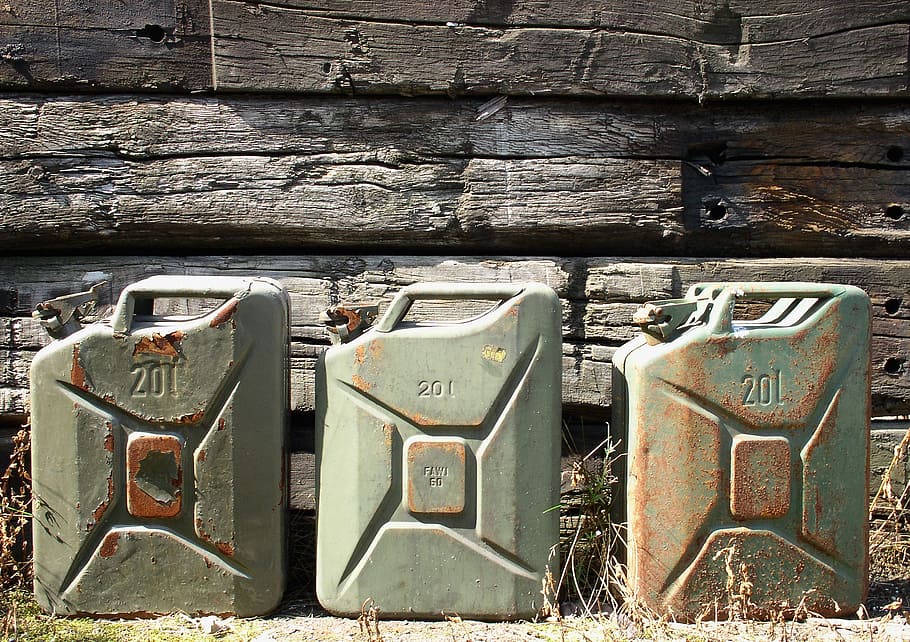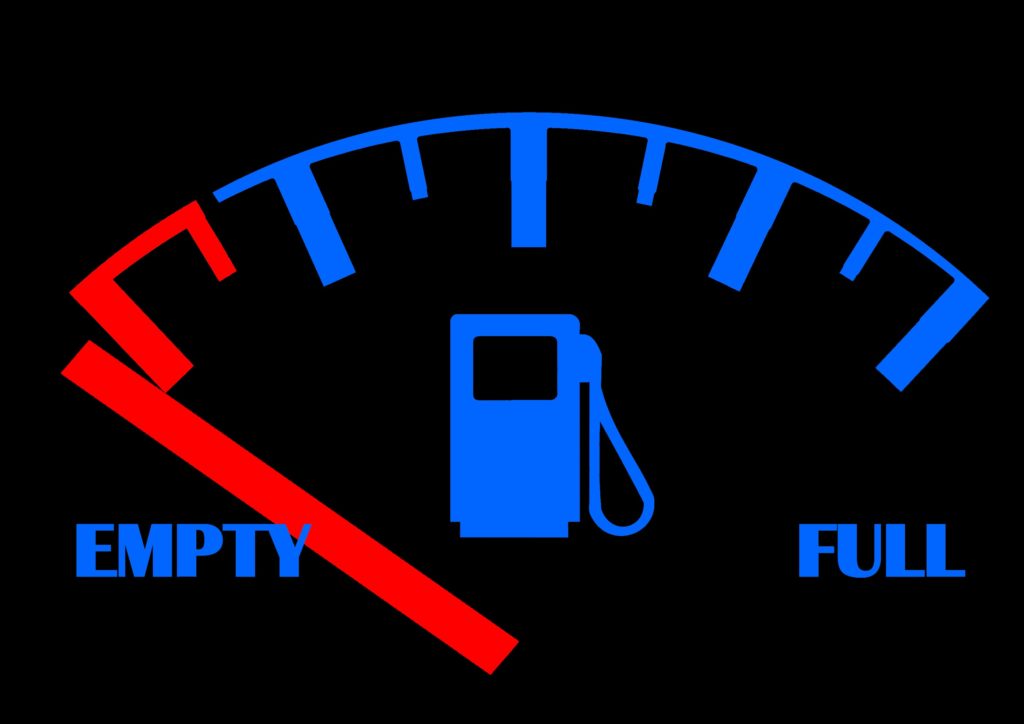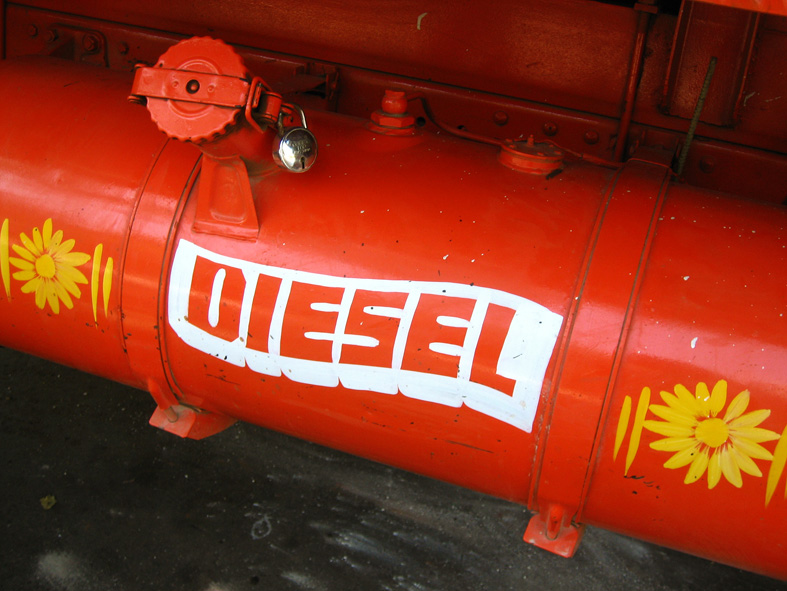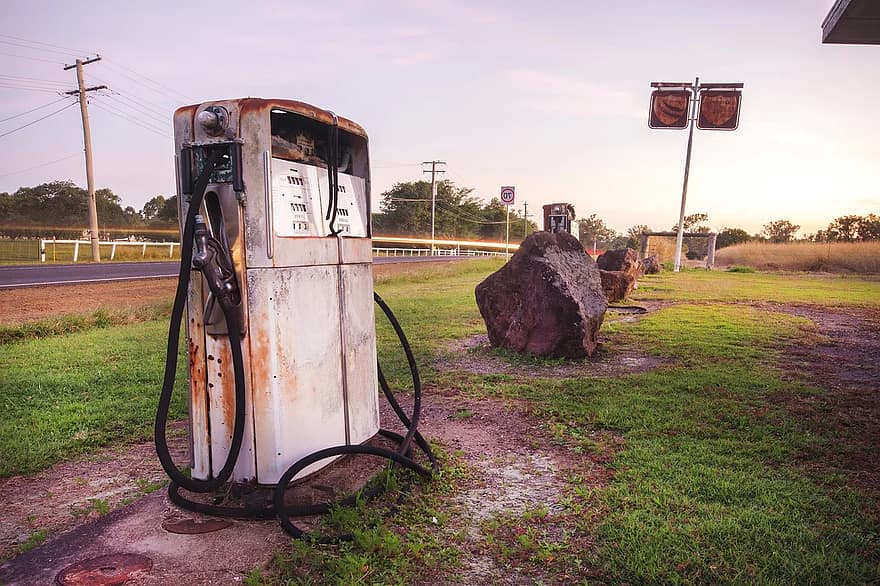A generator without gas is like a rifle without ammunition. For this machine to be useful to you, you must learn how to store diesel and gas for long term usage.
This is also the case if you don’t want to end up like those who can’t get gas after a natural emergency like hurricane Harvey, Irma, Jose, and Katia in 2017.
A good fuel storage plan generally involves purchasing and properly processing a minimum amount of fuel to get you through the scenario you are planning.
This could be fuel for your generators, or enough gas to get to your fallback location.
It’s easier to pre-purchase fuel and store it so that in an emergency you don’t have to wait in line.
There are a few things to consider when planning to store fuel for the long term that we will cover below.
What type of fuel container do you need?

Just like having water on hand for emergencies, it’s important to have a supply of fuel in containers that protect it and are easy to transport.
Could you store gas in thousand-gallon tanks underground?
Yes, and this is our dream scenario but for now, I guess some of us will have to settle for something a little more cost-effective and portable.
There are different types of fuel containers, but for gas, the most common style is the red plastic containers with a built-in spout of some shape.
Kerosene containers are blue, diesel is yellow and it’s important to follow this handy color convention so you don’t accidentally pour gas into your kerosene heater and fry your eyebrows or worse.
No matter what you use as a container, the place where you store your fuel should be as airtight as possible.
You don’t want fumes to leak into the area where you’ve stored your fuel, and you don’t want gasoline to evaporate quickly when exposed to the air.
You can get new fuel just about anywhere. Home Depot, Wal-Mart for example, and any hardware store will have some options for you.
Use of fuel additives to store diesel and gas for long term usage:

Gas loses its power over time, and this also applies to diesel and kerosene. hen stored at a temperature below 70 degrees, Diesel will last about 12 months without any additives, provided it is stored in a sealed container.
If the temperatures are well above 70, Diesel will only last for 6 months, that’s a 50% decrease in storage time.
As diesel fuel ages, fine sediment and gum forms, caused by the reaction of the diesel components with oxygen in the air.
The fine sediment and gum will clog the fuel filters, causing fuel starvation and engine shutdown.
Frequent filter changes are then required to keep the engine running. Gums and sediment do not burn well in the engine and can cause carbon and soot deposits on injectors and other combustion surfaces.
Now, what can we do to avoid such problems and protect our fuel? You don’t want to be caught by Hells zombie bikers because your engine has stopped?
There are two main additives you need, STA-BIL and PRI-G. PRI has several lines of additives and -G is synonymous with gasoline. They also have PRI-D for diesel.
PRI additives are designed to be added to your fuel on an annual basis to keep the fuel in the best possible condition.
If your fuel has already aged, simply adding PRI-G will restore the fuel to “fresh conditions.” We would prefer not to test this, but PRI-G has a decent reputation.
How much and where can I store diesel and gas for long term usage?

STA-BIL is one that you can safely use and it does much the same as PRI-G in terms of conditioning your fuel to last longer in storage than it would without treatment.
The instructions are simple, just mix the required amount with your fuel and the job is done.
You should be able to safely store the fuel for at least a year without adverse effects. Pour the additive first, then the gas so that it’s mixed completely.
Can you have too much fuel?

It depends on how much fuel you will need to use in an emergency. If you can’t get to the gas station or if there is a line at the pump, you can never have too much. Would 500 liters be enough? It really depends.
If you have a minor power outage that lasts a few days, you wouldn’t need that much gas at all. If you live under martial law or the end of the world is around the corner and there are no more gas stations, that 500 gallons will be a big help, but it won’t last forever.
A good basis is to take into consideration the 80/20 rule. What is the likelihood that you will need this fuel?
For most people, I think that storing fuel for a vehicle or generator is the most common scenario to plan for.
For your car, plan to store as much gas as you need to get to your fallback location and add 50% to that.
So, if you needed 2 tanks of gas to get to your spot and your tank contained 20 liters, I would store 60 liters of treated fuel.
That way, if for some reason there is a break in normality, the SHTF and the hoarders are walking around the parking lot of the gas station, you should be quiet for a little while.
For a generator, think about what you plan to use and how long you plan to run it for. 15 liters can last about a week as long as you use the generator for necessities only.
Of course, it depends on the time of year, but it’s an average.
Everyone should have at least one canister of gas stored for emergencies, but you want to store at least one canister of gas for your car which is about 17 liters and another 10 for the generator.
The fuel should be stored in a clean, preferably cool place, away from where you live. Do not store fuel in your home if possible because it can become an accident waiting to happen.
If your shed explodes, you would be much less worried than if your house exploded.
Don’t forget to keep your stock running:
Buy 50 liters of gas, put a little additive in it and store it. Use and run your fuel every year and you won’t be bothered if something forces you to use your supplies.
Since they mix the gas differently in winter, buy your fuel around January and store it for a year.
Before next January, load the gas tank in your car and then head to the pump for a new batch. That way, your fuel will still be of good quality.






